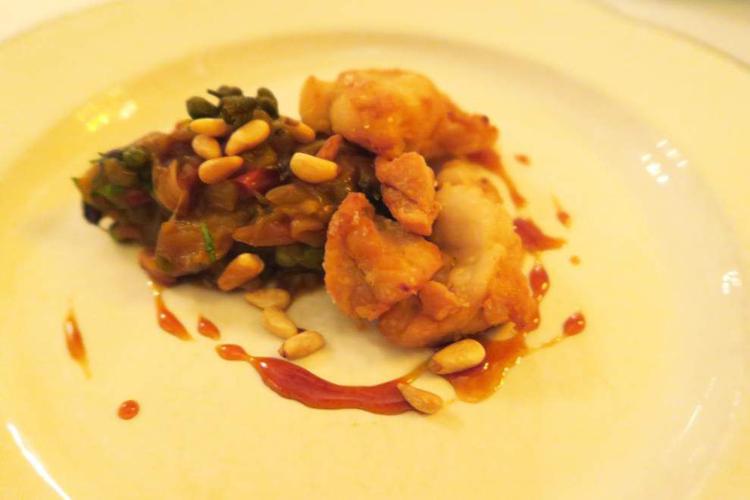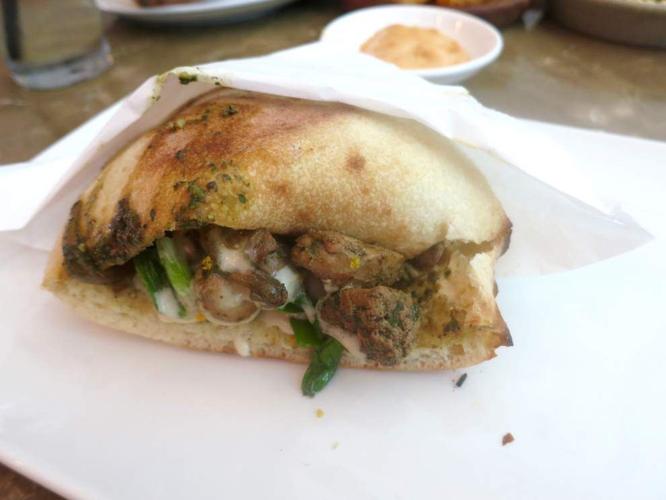The menu at Clancy’s Restaurant is full of signature Creole dishes that the regulars know by heart, and one rather unlikely muse for nightly experimentation: sweetbreads.
Brian Larson, executive chef of the Uptown restaurant, has a rotating repertoire of 20 or so sweetbreads recipes, and his cooks often get the nod to put their own spins on the dish, too.
“They’ll always be on our menu,” said Larson. “For those in the know, who have a taste for them, they’re always a big hit.”
Sweetbreads are an enigma coated in butter, wrapped in a persistently confusing nomenclature and gobbled up with unusual gusto in New Orleans.
“If there’s a town where you can sell sweetbreads, it’s New Orleans, more so than any city I’ve worked,” said Jason Goodenough, chef/owner of the Riverbend bistro Carrollton Market, where he serves them with house-made linguini, chanterelle mushrooms and lots of brown butter.
“It’s gourmet soul food, and people here just understand them,” he said.
Not sweet, and definitely not bread, sweetbreads are, usually, the thymus or pancreas glands from veal calves. They are offal, but the most regal offering in the realm of organs and innards, with a mild flavor and, when prepared right, a fine, creamy-smooth texture.
The dish has long been a mainstay at some of the city’s old line restaurants, notably Arnaud’s and Galatoire’s, and the classic French ris de veau is found at some traditional bistros, like La Crepe Nanou.
But sweetbreads are also a favorite among chefs working in more modern culinary modes, and this has been playing out across New Orleans menus in increasingly diverse fashion.
Chunks of sweetbreads carry a hint of smoke from the grill at Doris Metropolitan, the stylish Mediterranean steakhouse in the French Quarter where they’re plated with taut spheres of poblano-spiced yogurt over a carame
l-colored demi-glace.
At Toups’ Meatery in Mid-City, chef Isaac Toups makes them into a burly, eye-popping poutine, with crisp-edged nuggets planted between hunks of potato and gobs of melting cheddar curds. At lunch, griddled sweetbreads tumble from a pita sandwich at Shaya, chef Alon Shaya’s modern Israeli restaurant, alongside chicken hearts and livers.
The preparation at La Boca is traditional, though from the Argentine style that inspires this Warehouse District steakhouse. Here the sweetbreads go by their Spanish name, mollejas, and arrive as long, unusually large slabs grilled on skewers to a charred edge and finished with a simple splash of lemon.
In the Marigny, at the Franklin, chef Baruch Rabasa intersperses sweetbreads with equal parts crabmeat, over a bed of garlicky spinach with Champagne beurre blanc. Sue Zemanick, executive chef at Gautreau’s Restaurant, also often mixes her sweetbreads with crabmeat, or sometimes crawfish. They both pair well with sweetbreads’ flavor and texture, and, she said, can make the dish more approachable.
“You want to have something on there people recognize, for people just trying it out,” she said.
That’s how Martha Wiggins sees the sweetbreads recipe she inherited on the menu at Sylvain when she became executive chef at the French Quarter gastropub. Modeled after Buffalo wings, these sweetbreads are cut small and painted with a buttery, tangy house-made hot sauce.
“Buffalo style is almost like cheating, because so many people love that already,” Wiggins said. “So it makes it a good introduction to sweetbreads. It makes it more user-friendly.”
“It’s a cult”
The term sweetbreads is almost Orwellian in its deceptiveness, a misnomer that makes BBQ shrimp sound straightforward. A definitive etymology is elusive, though many sources attribute the name to their lighter (hence “sweet”) flavor compared with other meats, while bread could be derived from an old English word for morsels of food.
Their higher profile nationally may relate to an overall trend toward more exotic butcher shop finds, with marrow bones now practically mainstream and charcuterie a given on many menus. But in New Orleans in particular, there is a long running cultural affinity for sweetbreads that has also primed the pump.
The 1901 edition of “The Picayune’s Creole Cook Book,” a trove of old New Orleans foodways, lists 11 different sweetbreads recipes and ties the local appeal directly to France, where they have been highly valued for centuries.
“(T)he Creole chefs of New Orleans, improving upon old French methods of cooking, as well as originating their own delicious combinations, sustain the verdict of the gourmets of the ancient mother country,” the book explains.
For a finer education on sweetbreads, the cookbook recommended a visit to the slaughter house at the French Market “when the calves are being killed” to see the glands taken fresh from the animals’ necks.
Today, New Orleanians are much more likely to find sweetbreads on restaurant menus than their local butcher shop, though the prospect of the dish is still not for the squeamish. In their raw state they lack much romance, sitting pale and lumpy, with a quivering texture and sheathed in a slick membrane.
Most recipes are labor intensive and time-consuming, calling for the glands to be soaked and poached and often pressed overnight to compress their texture. Increased interest in sweetbreads have sent prices soaring, with chefs paying anywhere between $8 and $14 per pound, depending on type, just to get them in the door.
But for those who love them, chefs included, it’s all worth it.
“It’s a cult,” said Frank Brigtsen, chef/owner of Brigtsen’s Restaurant in the Riverbend. “You’re either on the bus or you’re not. Most people want nothing to do with it, but the others really love it.”
Brigtsen vividly recalls the first time he ate them, back at the original Crozier’s in New Orleans East in the 1970s.
“It was one of the top five culinary experiences I’ve ever had,” he said. “It was life changing. I can still taste it.”
Actually, he can taste something like it on his own menu, where a sweetbreads appetizer with capers and roasted garlic lemon butter is a direct tribute to the French rendition he first tried at Crozier’s.
Chef Susan Spicer has made similarly classic sweetbreads dishes fixtures at Bayona. That’s where Aaron Burgau first developed a taste for them, while working as a young line cook. At his own restaurant Patois, he serves a changing array of seasonally-inspired sweetbreads. Most recently, it’s been a pan-fried number with smoked farro, candied pecans and pumpkin with a country ham reduction.
To the mix of traditional and contemporary dishes at the new Brennan’s Restaurant that opened on Royal Street in 2014, chef Slade Rushing added a dish from his own previous restaurant, MiLa. His sweetbreads, pan-roasted and served over truffle grits with sherry bacon jus, have proven just as popular at this reborn Creole landmark.
“When people tell me it’s their favorite sweetbreads dish, it’s flattering, but it’s also funny that people could name a favorite sweetbreads dish, that doesn’t happen everywhere else,” said Rushing. “I have customers whose kids, early teenagers, order it every time they come in.”
That’s no surprise to Michael Sichel, executive chef at Galatoire’s (John Georges, owner of The Advocate, is an owner of Galatoire’s). The kitchen at this Creole landmark prepares its sweetbreads appetizer in a customary French way with lemon caper beurre blanc. But regulars here are prone to customize the dish themselves, requesting a clutch of sweetbreads with their lamb chops or veal liver like an a la carte side starch.
“People know we’ve always had sweetbreads,” said Sichel. “They’re craving it before they even walk in the door.”
Follow Ian McNulty on Twitter @IanMcNultyNOLA.











